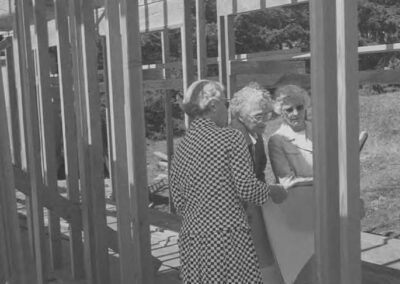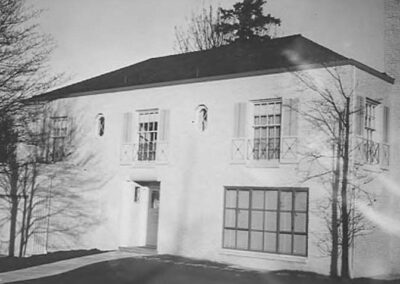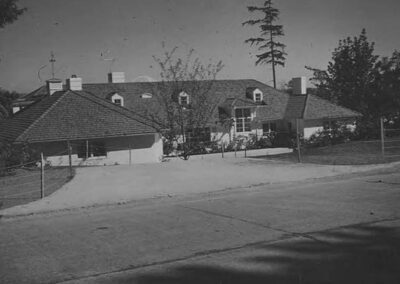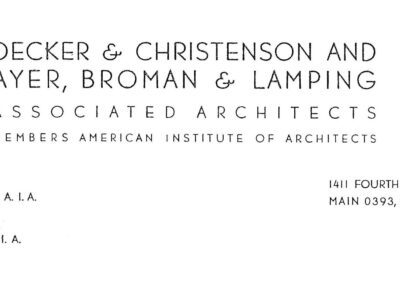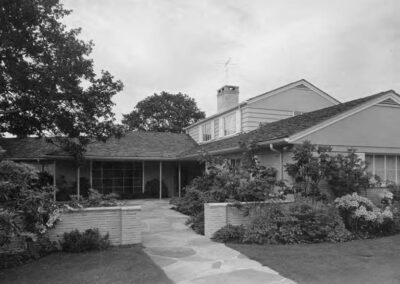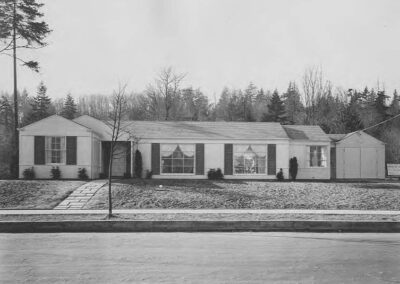
Ayer, Elizabeth
Born in 1897, Elizabeth Ayer grew up on a farm in Olympia, Washington. Her interest in mathematics and art led her to pursue architecture at the University of Washington at a time when very few women entered the profession. She was the fourth student and the first woman to graduate from the university’s new architecture program, graduating in 1921.
Ayer’s early career is largely tied with architect Edwin J. Ivey, but she also worked for architect Andrew Willatzen in Seattle, the architectural firm of Cross & Cross, and for Grosvenor Atterbury in New York. She was interested in European architecture and twice during the 1920s spent a year abroad to tour and study.
In 1927, Ayer began to collaborate with Ivey on a number of high-profile commissions for Seattle’s social elite. The design for these homes was traditional, predominantly Colonial and/or Tudor in style. These design tendencies marked Ayer’s projects throughout her career.
In 1930, Ayer became the first woman to be licensed as an architect in Washington state. After Ivey’s sudden death in 1940, she formed a new partnership with fellow University of Washington graduates Rolland Lamping, Ralf Decker, Waldo Christenson, and Harry Broman. Under the name Decker & Christenson and Ayer, Broman & Lamping Associated Architects, the firm completed a variety of projects from small homes and churches, to large commercial and military structures. As the senior partner in the firm, Ayer maintained her trademark period revival design work, particularly on primary facades. However, the rear elevations and the interior spaces of her later projects had a recognizable modernist bent, and they often featured expanses of glass, modern materials, and open floor plans.
Notable projects by Ayer during the later part of her career include the Davis House (1950) on Mercer Island; the Douds House (1951), which was featured in the book, Practical Houses for Contemporary Living; the Linden House (1962) on Bainbridge Island; and the Forland House (1963) in Seattle.
In 1970, Ayer retired after nearly half a century of architectural practice. In 1980, the Seattle Chapter of the AIA Senior Council honored her for her dedicated service as a pioneering female architect. She retired to the Panorama Retirement facility in Lacey and died there in 1987.
– Michael C Houser
Dorothy Olzendam, Elizabeth Ayer, and Doris Worthington reviewing building process of Olzendam House | Orcas Island
Built 1963 | Source: University of Washington Special Collections
Decker & Christenson and Ayer, Broman & Lamping Letterhead | 1951
Source: WA State Dept of Architectural Licensing
